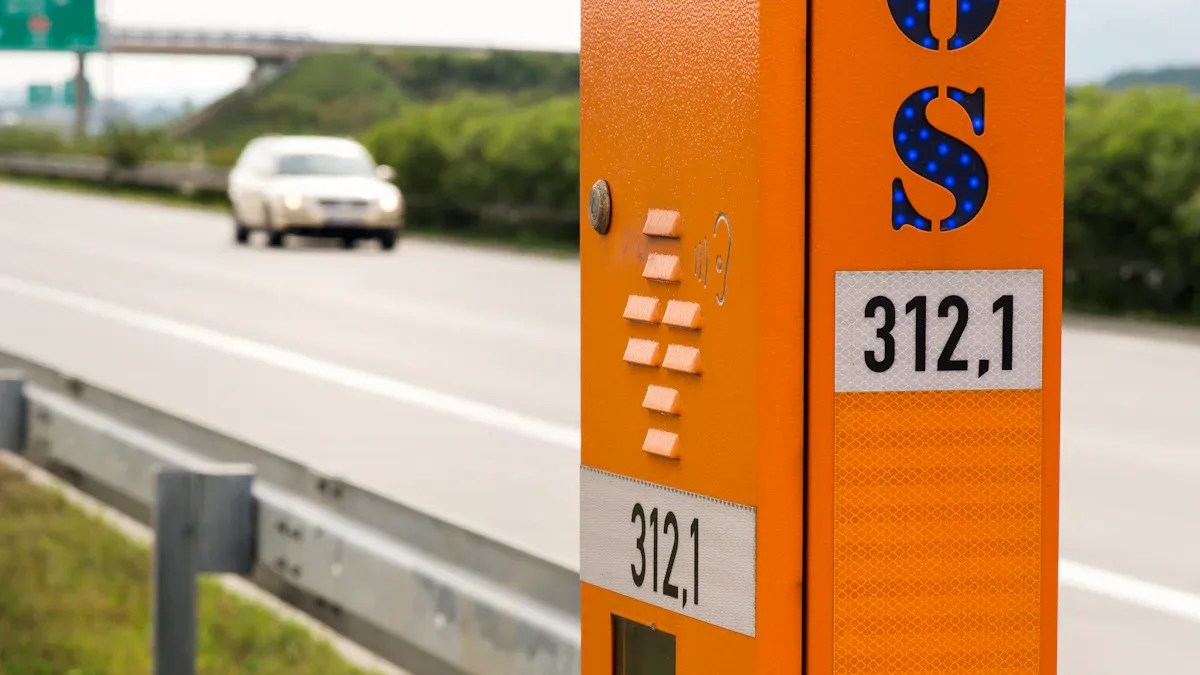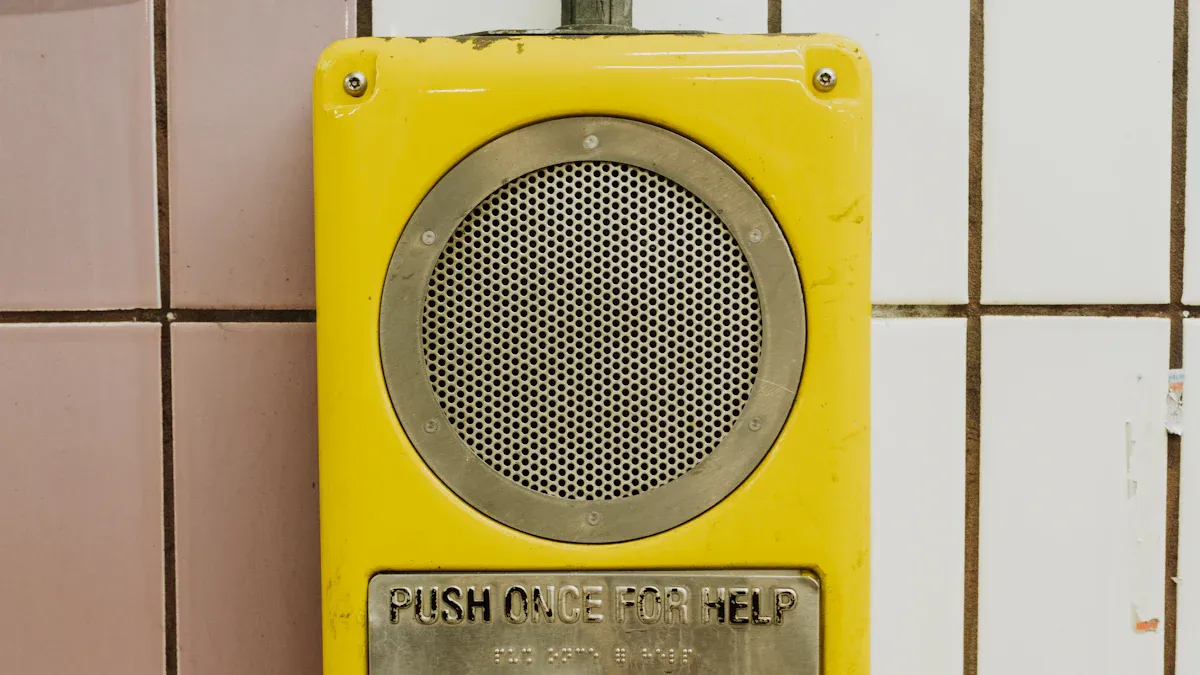
Emergency tunnel telephones provide a lifeline in critical situations. They allow people to call for help instantly, even in remote or high-risk areas. Public tunnel telephones, designed for durability, ensure communication remains intact during emergencies. Modern systems, including IP tunnel telephones and IP elevator telephones, combine reliability with advanced features, making them indispensable for public safety.
Advancements in Emergency Tunnel Telephone Technology

Key Features of Modern Emergency Tunnel Telephones
Modern emergency tunnel telephones are packed with features that enhance their reliability and functionality. These devices are designed to perform in challenging environments, ensuring they remain operational when needed most. Some of their standout features include:
- Advanced imaging technology: These telephones use cutting-edge imaging techniques and algorithms to improve the detection of emergency indicators in tunnels.
- Strategic placement: Indicators are installed every 200 meters, making them easy to locate during emergencies.
- Far-infrared cameras: Unlike ordinary cameras, these cameras work effectively in dark environments, ensuring visibility and accessibility.
These features make emergency tunnel telephones indispensable for public safety, especially in high-risk areas.
Integration with Tunnel Safety and Monitoring Systems
Emergency tunnel telephones are no longer standalone devices. They now integrate seamlessly with advanced safety and monitoring systems, improving overall emergency response.
- Real-time monitoring systems use machine learning to assess safety conditions and detect anomalies. This allows for immediate identification of potential threats.
- RTLS (Real-Time Location Systems) provides accurate tracking and smart alerts, streamlining evacuation processes during emergencies.
- Data from various sensors is processed to ensure swift intervention, enhancing safety and response times.
Tip: Integration with these systems not only improves safety but also ensures that emergency tunnel telephones remain a vital part of the overall safety infrastructure.
Role of IoT and Remote Monitoring in Maintenance
The Internet of Things (IoT) has revolutionized how emergency tunnel telephones are maintained. By connecting these devices to a central system, operators can monitor their performance remotely. For example, the Autopista Del Sol Highway uses a SCADA server to collect data from sensors and control devices in tunnels. This setup ensures efficient monitoring and quick responses to any issues.
Reliable industrial networking equipment, such as Ethernet switches and wireless devices, plays a crucial role in keeping these systems connected. This technology ensures that emergency tunnel telephones remain operational, reducing downtime and improving maintenance efficiency.
IoT and remote monitoring have made it easier than ever to maintain these critical devices, ensuring they are always ready to perform when needed.
Installing Emergency Tunnel Telephones: A Step-by-Step Guide
Conducting Site Assessments and Planning
Before installing emergency tunnel telephones, conducting a thorough site assessment is essential. This step helps identify the best locations for installation and ensures the equipment meets the tunnel’s unique requirements. Site assessments typically involve evaluating tunnel dimensions, environmental conditions, and traffic patterns. Planners also consider accessibility to ensure users can easily locate the telephones during emergencies.
Tip: Collaborating with safety experts during this phase can help identify potential risks and improve the overall installation plan.
Choosing Equipment Suitable for Tunnel Conditions
Selecting the right equipment is crucial for ensuring long-term reliability. Emergency tunnel telephones must withstand harsh conditions like high humidity, extreme temperatures, and poor lighting. To make informed decisions, planners should evaluate performance data across several categories:
| Inspection Type | Description |
|---|---|
| Mechanical | Verifying the condition and operation of tunnel mechanical equipment and systems, such as ventilation fans and plumbing systems. |
| Structural | Inspecting suspended ceilings, structural attachments, and tunnel finishes. |
| Safety | Checking the condition of safety equipment like fire protection systems and traffic signals. |
| Security | Assessing security systems including video cameras and alarms. |
| Electrical | Evaluating electrical systems for power distribution and emergency lighting. |
This data ensures the chosen equipment can handle the tunnel’s specific challenges while maintaining optimal performance.
Best Practices for Installation and Accessibility
Proper installation is key to ensuring emergency tunnel telephones function effectively. Installers should follow these best practices:
- Position telephones at regular intervals, such as every 200 meters, to maximize accessibility.
- Use durable mounting systems to prevent damage from vibrations or environmental factors.
- Ensure telephones are clearly marked with reflective signage for visibility in low-light conditions.
Regular testing after installation ensures the system operates as intended. By prioritizing accessibility and durability, planners can create a reliable communication network for emergencies.
Maintenance Strategies for Emergency Tunnel Telephones in 2025
Routine Inspections and Performance Testing
Regular inspections keep emergency tunnel telephones in top shape. Technicians should check for physical damage, such as cracks or loose components. They should also test the audio quality and ensure the device connects to the central system without delays. Performance testing can include simulated emergency calls to verify functionality under real-world conditions.
A simple checklist can make inspections more efficient:
- Confirm the telephone is securely mounted.
- Test the microphone and speaker for clarity.
- Check the power supply and backup systems.
Tip: Schedule inspections during low-traffic hours to minimize disruptions and ensure thorough testing.
Troubleshooting and Resolving Common Issues
Even the best systems can face occasional hiccups. Common problems include connectivity issues, power failures, or damaged components. When a problem arises, technicians should follow a step-by-step troubleshooting process.
For example:
- Identify the issue: Is it a hardware or software problem?
- Test the connection: Ensure the telephone is linked to the network.
- Replace faulty parts: Swap out damaged cables or components.
Quick action prevents small issues from becoming major failures. Keeping spare parts on hand can also reduce downtime.
Scheduling Software and Firmware Updates
Modern emergency tunnel telephones rely on software to function efficiently. Regular updates improve performance and add new features. Technicians should schedule updates during planned maintenance windows to avoid disruptions.
Note: Always back up system data before installing updates. This ensures no critical information is lost if something goes wrong.
Automated update systems can simplify this process. They allow technicians to push updates remotely, saving time and effort. Staying current with software ensures the telephones remain reliable and secure.
Addressing Challenges in Maintaining Emergency Tunnel Telephones
Mitigating Environmental Impacts in Tunnel Environments
Tunnel environments can be harsh, with factors like high humidity, seismic activity, and groundwater flow posing significant challenges. Emergency tunnel telephones must endure these conditions without compromising performance. For instance, tunnels with sandy loam soil and fractured sandstone often experience water seepage, which can damage electrical components. To combat this, manufacturers use waterproof casings and corrosion-resistant materials.
Seismic activity also demands attention. A magnitude 4.2 earthquake recorded last year highlights the need for shock-resistant designs. Regular environmental assessments, such as monitoring groundwater levels and surface water quality, help identify risks early. These strategies ensure emergency communication systems remain reliable, even in extreme conditions.
Tip: Investing in durable materials and conducting frequent environmental checks can significantly reduce maintenance issues.
Ensuring Compatibility with Older Systems
Integrating new emergency tunnel telephones with older systems can be tricky. Legacy systems often use outdated communication protocols, making seamless integration a challenge. However, adopting universal standards and interfaces simplifies this process. For example, using software drivers designed for backward compatibility ensures smooth operation without overhauling existing infrastructure.
A quick comparison shows how modern IP technology outperforms traditional systems:
| Compatibility Factor | Description |
|---|---|
| System Codes and Standards | Ensures integration by addressing communication protocols and interfaces. |
| Integrated Legacy Systems | Interfaces allow new technologies to work with older architectures. |
| Software Driver Availability | Simplifies compatibility, reducing the need for extensive modifications. |
| Maintenance and Support Costs | Minimizes expenses by avoiding third-party software dependencies. |
By focusing on compatibility, operators can upgrade systems without disrupting current operations.
Balancing Maintenance Costs with Quality Standards
Maintaining emergency tunnel telephones requires balancing costs with performance. While high-quality materials and advanced features increase upfront expenses, they reduce long-term maintenance needs. For example, IP-based systems simplify wiring and installation, cutting labor costs. A single LAN cable replaces complex low-voltage wiring, making repairs faster and cheaper.
Real-world incidents, like the Copiapó mine collapse in Chile, emphasize the importance of reliable communication. Investing in robust systems prevents costly failures during emergencies. Operators should also consider automated monitoring tools to detect issues early, reducing repair costs.
Note: Spending wisely on durable equipment and proactive maintenance saves money in the long run.
Maintaining emergency tunnel telephones is vital for public safety and reliable communication during emergencies. Modern technologies, like IoT and remote monitoring, simplify maintenance and improve performance.
Reminder: Regular inspections and updates ensure these systems stay operational when they’re needed most. Stakeholders should prioritize proactive maintenance to avoid costly failures and enhance safety.
By staying ahead with these practices, tunnels can remain secure and ready for any situation.
FAQ
What makes emergency tunnel telephones different from regular phones?
Emergency tunnel telephones are built for durability. They withstand extreme conditions like humidity, heat, and vibrations. Their advanced features ensure reliable communication during emergencies. 🚨
How often should emergency tunnel telephones be inspected?
Technicians should inspect them every three to six months. Regular checks ensure they stay functional and ready for emergencies.
Tip: Schedule inspections during low-traffic hours for minimal disruption.
Can older systems work with modern emergency telephones?
Yes, they can! Using universal standards and backward-compatible software drivers allows seamless integration without replacing the entire system. This saves time and money. 💡


